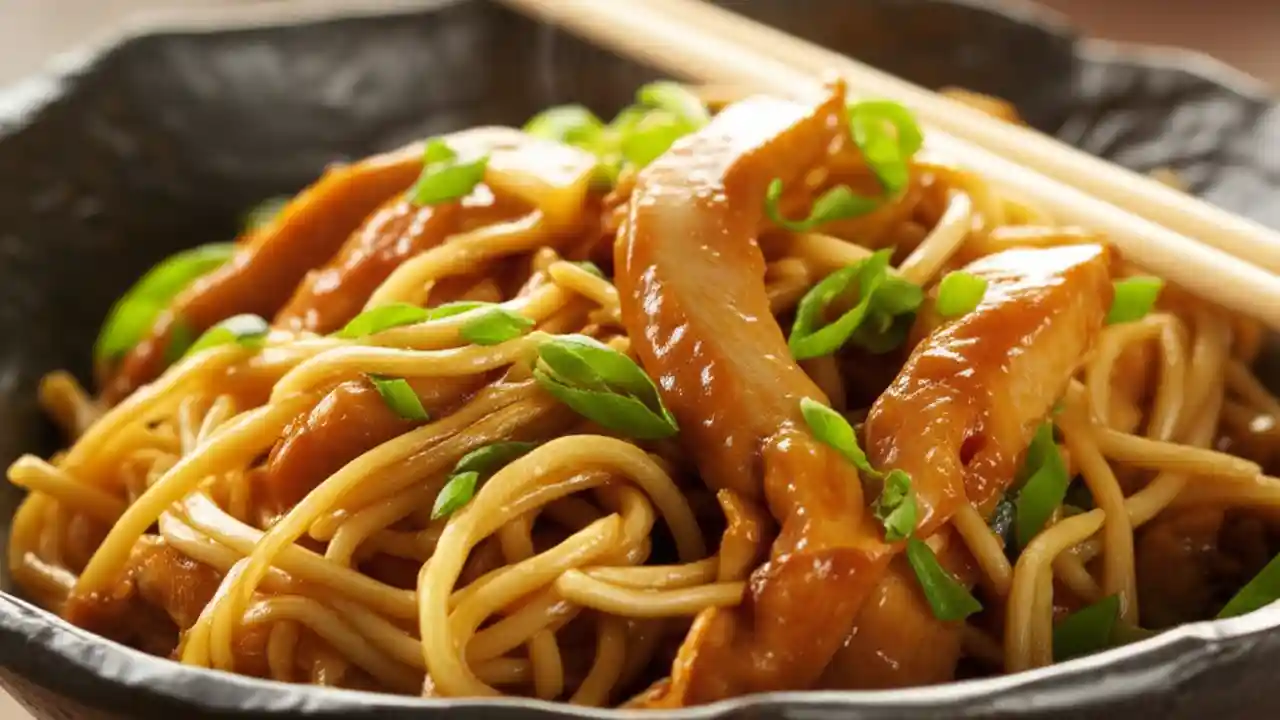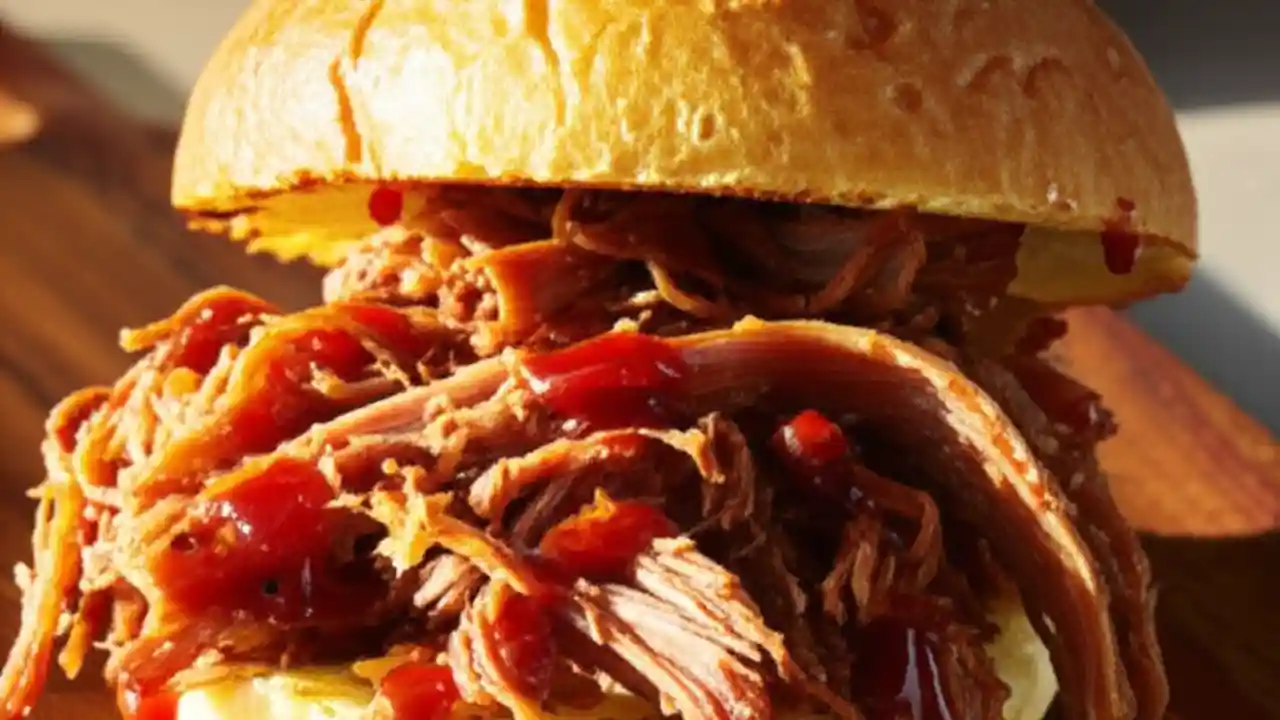Living a healthy, vibrant life with food allergies is absolutely achievable by mastering three key areas: diligently reading food labels, planning your meals with whole foods in mind, and creating a safe kitchen environment. It’s less about restriction and more about empowerment through knowledge. For over two decades, I’ve helped people navigate this journey, and I can tell you that confidence is your greatest tool.
This guide is your complete playbook for healthy eating with food allergies. We’ll move beyond the basics and dive deep into practical, real-world strategies. We’ll cover everything from deciphering confusing labels and avoiding cross-contamination to ensuring you get balanced nutrition and can still enjoy dining out. Think of this as the definitive resource you’ll want to bookmark and return to, designed to make your allergy journey simpler and safer.
Table of Contents
Mastering the Basics: Labels, Laws, and Your Kitchen
Before you can build a healthy plate, you need to build a safe foundation. This starts with understanding the information you’re given—on food packages and in your own home. It’s about creating a system you can trust.
What are the ‘Top 9’ major food allergens?
In the United States, federal law requires that the nine most common food allergens be clearly identified on food labels. Knowing these by heart is the first step in protecting yourself. As of 2025, the list has been updated and solidified, so it’s crucial to be familiar with all nine.
Here is a breakdown of the “Top 9” allergens and common foods where they might be hiding:
| Allergen | Often Found In | Watch Out For These Terms |
|---|---|---|
| Milk | Cheese, butter, yogurt, baked goods, sauces | Casein, whey, lactose, ghee |
| Eggs | Mayonnaise, baked goods, pasta, custards | Albumin, globulin, lysozyme |
| Fish | Sauces (Worcestershire, Caesar), some gelatin | Anchovies, tuna, salmon, cod |
| Crustacean Shellfish | Shrimp paste, seafood flavorings | Shrimp, crab, lobster, crawfish |
| Tree Nuts | Pesto, cereals, cookies, marinades, lotions | Almonds, walnuts, pecans, cashews |
| Peanuts | Sauces (satay), candy, chili, mole sauce | Ground nuts, beer nuts, arachis oil |
| Wheat | Breads, soy sauce, beer, soups, salad dressings | Flour, gluten, semolina, spelt, durum |
| Soybeans | Tofu, edamame, miso, processed foods, vegetable broth | Soy protein, lecithin, tempeh |
| Sesame | Tahini, hummus, bread, snack bars, seasonings | Benne seed, gingelly, sim sim |
Remember, this list covers the most common allergens, but a person can be allergic to any food. Always work with your allergist to understand your specific triggers.
How do I read food labels for allergens correctly?
Reading a food label is like being a detective. Your goal is to find the “smoking gun”—the allergen—before it causes a problem. Manufacturers have two primary ways to declare major allergens.
1. In the Ingredients List: The common name of the allergen must be included in parentheses after the ingredient name. For example: “Enriched flour (wheat flour, niacin), whey (milk), and lecithin (soy).”
2. Using a “Contains” Statement: A separate statement must be placed immediately after or next to the ingredients list. It will say “Contains” followed by the names of the major allergens. For example: “Contains Wheat, Milk, and Soy.”
My personal rule, which I’ve shared for years, is the “Three-Read” system. It might seem like overkill, but it has prevented countless accidental exposures for my clients.
- First Read (In the Store): Quickly scan for the “Contains” statement. If your allergen is listed, it goes back on the shelf. If there’s no statement, proceed to the next step.
- Second Read (At Home, Before Putting Away): Before the item goes into your pantry or fridge, read the entire ingredients list carefully. This is a slower, more deliberate read to catch any hidden allergens.
- Third Read (Before You Eat): One final check right before you cook with or consume the product. Formulations can change, and this final check is your last line of defense.
How can I avoid cross-contamination in my kitchen?
Your kitchen should be your sanctuary. If you live in a “mixed” household where some members eat allergens and others don’t, preventing cross-contamination is critical. It’s about creating zones and systems.
Here are the most effective strategies I’ve seen work in hundreds of homes:
- Color-Code Everything: Assign a specific color to the person with allergies. Buy cutting boards, utensils (spatulas, spoons), and even plates in that color. This is a simple visual cue for everyone in the family. For example, purple is only for allergy-safe food prep.
- Separate Your Tools: Never use the same toaster for gluten-free and regular bread. Toaster bags can be a good compromise, but a dedicated toaster is safest. The same goes for waffle irons, can openers, and strainers.
- The “Top Shelf” Rule: Store all allergy-safe foods on the top shelf of the pantry and refrigerator. This prevents crumbs or spills from an allergenic food from falling onto a safe food.
- Wash Hands and Surfaces Religiously: Wash your hands with soap and water before preparing an allergy-safe meal. Wiping with a wet cloth isn’t enough to remove allergen proteins. Use a clean cloth or paper towel with a cleaning spray to wipe down counters before you start.
- Order of Operations: Prepare the allergy-safe meal first. Get it cooked and plated, then cover it and set it aside. Only then should you prepare meals containing allergens. This minimizes the time allergens are active in the kitchen.
Building Your Plate: Nutrition and Safe Food Choices
Once you’ve secured your environment, the fun part begins: building delicious, nutritious meals. Having a food allergy doesn’t mean your diet has to be bland or nutritionally deficient. It just requires a little more planning.
How do I get balanced nutrition when cutting out major food groups?
This is one of the biggest concerns I hear, and it’s a valid one. Cutting out a food group like dairy or wheat means you’re also cutting out the key nutrients they provide. The solution is strategic substitution, not just elimination.
Think of it as a “nutrient swap.” If you remove one source, you must intentionally add another. Here’s a table to guide you:
| If You’re Avoiding… | You Might Miss… | Excellent Sources to Add |
|---|---|---|
| Milk/Dairy | Calcium, Vitamin D, Protein | Fortified plant milks (oat, pea, soy), tofu, leafy greens (kale, collards), canned salmon/sardines (with bones), fortified orange juice. |
| Eggs | Protein, Choline, Vitamin B12 | Meat, poultry, fish, legumes, tofu, nutritional yeast (for B12), sunflower seeds (for choline). |
| Wheat | B Vitamins, Fiber, Iron | Quinoa, buckwheat, certified gluten-free oats, brown rice, beans, lentils, fruits, and vegetables. |
| Peanuts/Tree Nuts | Healthy Fats, Protein, Vitamin E | Sunflower seeds, pumpkin seeds, olive oil, avocado, and seed butters (like SunButter). |
Working with a registered dietitian who specializes in food allergies is always a fantastic idea, especially for children, to ensure all nutritional needs are being met during critical growth periods.
What are some naturally allergy-friendly foods I can rely on?
Focusing on what you *can* eat is a powerful mindset shift. The best approach is to build your diet around whole, single-ingredient foods that are naturally free from most common allergens.
Your grocery cart should be full of these items:
- Fresh Fruits: Apples, bananas, berries, oranges, melons. They are simple, nutritious, and safe.
- Fresh Vegetables: Broccoli, carrots, spinach, bell peppers, sweet potatoes. The more colorful, the better.
- Lean Proteins: Plain chicken breast, turkey, fish, and cuts of beef or pork. Avoid pre-marinated or breaded options unless you can verify every ingredient.
- Legumes: Lentils, chickpeas, and black beans are fantastic sources of protein and fiber. Buy them dry to avoid additives in canned versions, or rinse canned beans well.
- Gluten-Free Grains: Rice (white, brown, wild), quinoa, and certified gluten-free oats are versatile bases for any meal.
The more your diet is based on these whole foods, the less you have to worry about hidden allergens in processed products. It’s simpler, often cheaper, and healthier overall.
Navigating the World: Dining Out and Social Situations
Managing food allergies isn’t just about what happens in your kitchen. It’s about feeling confident and safe when you’re traveling, at a party, or enjoying a meal at a restaurant. This is where communication becomes your most important skill.
How can I safely eat out at restaurants with food allergies?
Dining out can feel daunting, but with the right preparation, it can be a safe and enjoyable experience. I’ve used this five-step process for years, and it works.
1. Research Before You Go: Don’t just show up. Look at the restaurant’s menu online. Many chains now have dedicated allergen menus or interactive tools. Look for simpler, grilled dishes rather than complex sauces or fried items, which carry a high risk of cross-contamination.
2. Call Ahead: Call the restaurant during off-peak hours (like between 2 PM and 4 PM). Ask to speak with a manager or chef. Explain your allergies clearly and calmly. Ask them, “Do you have protocols in place to handle severe food allergies safely?” Their answer will tell you a lot about their level of training and care.
3. Communicate Clearly When Ordering: When you arrive, inform your server of your allergies immediately. Use clear, serious language. Instead of “I don’t like milk,” say “I have a severe milk allergy. Any exposure could cause anaphylaxis.” Handing the server a “chef card” that lists your allergies can also be very effective.
4. Ask Specific Questions: Don’t just ask if a dish contains your allergen. Ask about the preparation process.
- “Is the chicken grilled on the same surface as the cheese sandwiches?”
- “Do you use a separate fryer for the french fries versus the breaded shrimp?”
- “Can the chef use a clean cutting board and clean utensils to prepare my meal?”
5. When in Doubt, Don’t: If you don’t feel confident in the staff’s ability to keep you safe, it’s okay to leave or just order a simple beverage. Your health is the top priority. Always carry your prescribed epinephrine auto-injectors with you, no exceptions.
How should I talk to friends and family about food allergies?
This can be one of the most emotionally challenging parts. You want to keep yourself or your child safe without offending loved ones who may not understand the severity.
My advice is to be polite, firm, and educational. When invited to a party, you could say: “Thank you so much for the invitation! We’re so excited to come. Just to make things easier on you, we’ll bring a safe dish for Johnny to eat, as his peanut allergy is quite severe. We wouldn’t want you to have to worry about cross-contamination in your kitchen.”
This approach does three things: it shows gratitude, it clearly states the boundary, and it offers a solution that takes the burden off the host. It frames your actions around safety and helpfulness, not distrust.
Clearing Up Confusion: Common Allergy Questions
The world of food allergies is filled with confusing terms and myths. Let’s clear up a few of the most common points of confusion to make you a more informed advocate for your own health.
What’s the real difference between a food allergy and an intolerance?
This is a critical distinction. They are often used interchangeably, but they are fundamentally different medical conditions involving different body systems.
| Feature | Food Allergy | Food Intolerance |
|---|---|---|
| System Involved | Immune System | Digestive System |
| Mechanism | The body mistakenly identifies a food protein as a threat and releases chemicals like histamine. | The body lacks an enzyme to digest a certain food (e.g., lactase for lactose intolerance) or is sensitive to a chemical. |
| Symptoms | Can be life-threatening. Hives, swelling, itching, trouble breathing, vomiting, anaphylaxis. | Uncomfortable but not life-threatening. Gas, bloating, stomach pain, diarrhea, headaches. |
| Onset of Reaction | Usually rapid (seconds to two hours). | Can be slow (several hours to a day). |
| Amount Needed | A tiny trace amount can trigger a major reaction. | A person may be able to tolerate a small amount of the food without symptoms. |
In short, an allergy can kill you; an intolerance will just make you feel miserable. This is why it’s so important to use precise language when communicating your needs.
Are ‘may contain’ statements meaningful? Should I trust them?
Statements like “May contain traces of nuts,” “Processed in a facility that also handles wheat,” or “Made on shared equipment with soy” are known as Precautionary Allergen Labeling (PAL). Here’s the most important thing to know: PAL is voluntary.
This means there are no legal standards for when a company must or must not use these warnings. Some companies use them on everything to avoid liability, while others with a real risk of cross-contamination may not use them at all. Because of this lack of regulation, most allergists and patient advocacy groups advise that people with life-threatening allergies should avoid all products with a PAL for their allergen.
The absence of a PAL is not a guarantee of safety. The only guarantee is a certified allergen-free claim or calling the company directly to inquire about their manufacturing processes. It’s a frustrating reality, but erring on the side of caution is the only safe path.
Conclusion
Embracing a healthy lifestyle with food allergies is a journey of empowerment, not deprivation. By focusing on reading labels with precision, building your meals around whole foods, and communicating your needs with confidence, you take control. It’s about creating systems that keep you safe so you can focus on living a full and delicious life. You have the tools, you have the knowledge, and you absolutely can thrive.
If this guide has helped you, please consider sharing it with someone else who is navigating their own food allergy journey. Spreading knowledge is how we build a safer, more understanding community for everyone.







